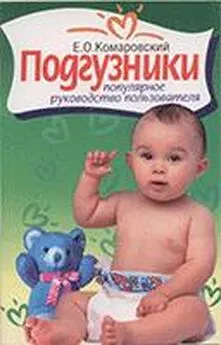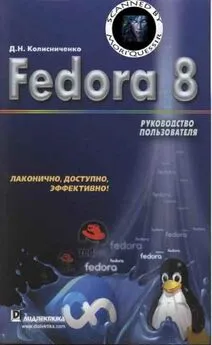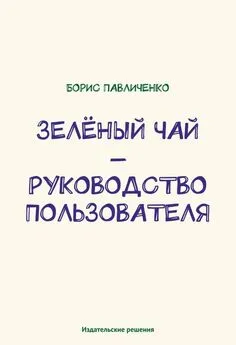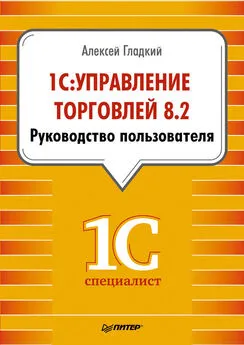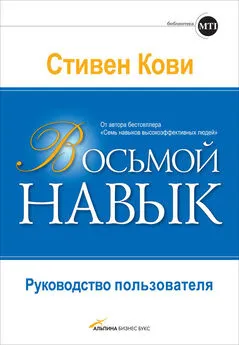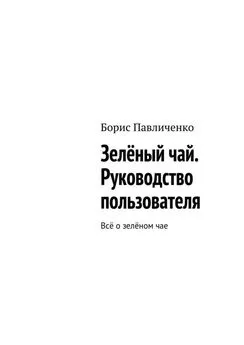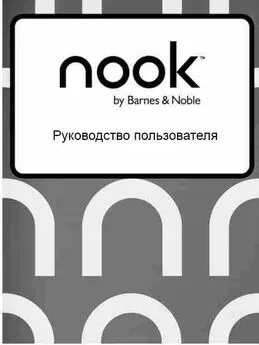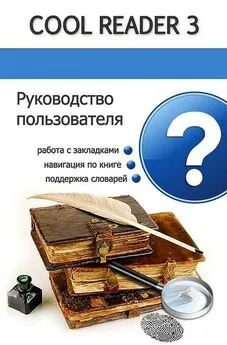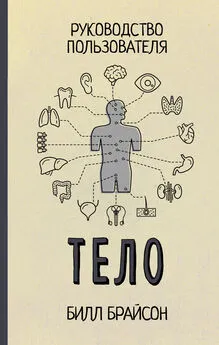Кристи Фанк - Грудь. Руководство пользователя [litres]
- Название:Грудь. Руководство пользователя [litres]
- Автор:
- Жанр:
- Издательство:Литагент 5 редакция «БОМБОРА»
- Год:2020
- Город:Москва
- ISBN:978-5-04-108737-1
- Рейтинг:
- Избранное:Добавить в избранное
-
Отзывы:
-
Ваша оценка:
Кристи Фанк - Грудь. Руководство пользователя [litres] краткое содержание
Грудь. Руководство пользователя [litres] - читать онлайн бесплатно ознакомительный отрывок
Интервал:
Закладка:
312
R. Mattes, “Effects of Aspartame and Sucrose on Hunger and Energy Intake in Humans,” Physiology and Behavior 47, no. 6 (1990): 1037–1044.
313
Q. Yang, “Gain Weight by ‘Going Diet?’ Artificial Sweeteners and the Neurobiology of Sugar Cravings: Neuroscience 2010,” Yale Journal of Biology and Medicine 83, no. 2 (2010): 101.
314
Joint FAO/WHO Expert Committee on Food Additives, “Evaluation of Certain Food Additives,” World Health Organization Technical Report Series 952 (2009): 1–208.
315
G. J. M. den Hartog et al., “Erythritol Is a Sweet Antioxidant,” Nutrition 26, no. 4 (2010): 449–458.
316
N. M. Avena, P. Rada, and B. G. Hoebel, “Evidence for Sugar Addiction: Behavioral and Neurochemical Effects of Intermittent, Excessive Sugar Intake,” Neuroscience and Biobehavioral Reviews 32, no. 1 (2008): 20–39.
317
D. G. Liem and C. de Graaf, “Sweet and Sour Preferences in Young Children and Adults: Role of Repeated Exposure,” Physiology and Behavior 83, no. 3 (December 2004): 421–429.
318
S. Thongprakaisang et al., “Glyphosate Induces Human Breast Cancer Cells Growth via Estrogen Receptors,” Food and Chemical Toxicology 59 (2013): 129–136.
319
K. E. Bradbury et al., “Organic Food Consumption and the Incidence of Cancer in a Large Prospective Study of Women in the United Kingdom,” British Journal of Cancer 110, no. 9 (2014): 2321.
320
C. Smith-Spangler et al., “Are Organic Foods Safer or Healthier than Conventional Alternatives? A Systematic Review,” Annals of Internal Medicine 157, no. 5 (2012): 348–366.
321
B. P. Baker et al., “Pesticide Residues in Conventional, Integrated Pest Management (IPM)-grown and Organic Foods: Insights from Three US Data Sets,” Food Additives and Contaminants 19, no. 5 (2002): 427–446.
322
Agricultural Marketing Service, “The National List,” United States Department of Agriculture, обновлено 21 декабря 2017 года, https://www.ams.usda.gov/rules-regulations/organic/national-list.
323
W. J. Krol et al., “Reduction of Pesticide Residues on Produce by Rinsing,” Journal of Agricultural and Food Chemistry 48, no. 10 (2000): 4666–4670.
324
Z. Y. Zhang, X. J. Liu, and X. Y. Hong, “Effects of Home Preparation on Pesticide Residues in Cabbage,” Food Control 18, no. 12 (2007): 1484–1487.
325
G. Perelló et al., “Concentrations of Polybrominated Diphenyl Ethers, Hexachlorobenzene and Polycyclic Aromatic Hydrocarbons in Various Foodstuffs before and after Cooking,” Food and Chemical Toxicology 47, no. 4 (2009): 709–715.
326
U. Bajwa and K. S. Sandhu, “Effect of Handling and Processing on Pesticide Residues in Food: A Review,” Journal of Food Science and Technology 51, no. 2 (2014): 201–220.
327
P. Chandon and B. Wansink, “The Biasing Health Halos of Fast-Food Restaurant Health Claims: Lower Calorie Estimates and Higher Side-Dish Consumption Intentions,” J ournal of Consumer Research 34, no. 3 (2007): 301–314.
328
“Distinction Between Genetic Engineering and Conventional Plant Breeding Becoming Less Clear, Says New Report on GE Crops,” The National Academies of Sciences, Engineering, and Medicine, May 17, 2016, http://www8.nationalacademies.org/onpinews/newsitem.aspx?RecordID=23395.
329
United States Department of Agriculture, “Pesticide Data Program Annual Summary, Calendar Year 2011,” https://www.ams.usda.gov/sites/default/files/media/2011%20PDP%20Annual%20Summary.pdf; E. Reverchon et al., “Hexane Elimination from Soybean Oil by Continuous Packed Tower Processing with Supercritical CO 2,” Journal of the American Oil Chemists’ Society 77, no. 1 (2000): 9–14.
330
M. H. Carlsen et al., “The Total Antioxidant Content of More than 3100 Foods, Beverages, Spices, Herbs and Supplements Used Worldwide,” Nutrition Journal 9, no. 1 (2010): 3.
331
Superfoodly.com, “ORAC Values: Antioxidant Values of Foods and Beverages,” https://www.superfoodly.com/orac-values. Глава пятая. Не только еда: что еще делать
332
G. N. Hortobagyi et al., “The Global Breast Cancer Burden: Variations in Epidemiology and Survival,” Clinical Breast Cancer 6, no. 5 (2005): 391–401.
333
J. Ferlay et al., “Cancer Incidence and Mortality Worldwide: Sources, Methods and Major Patterns in GLOBOCAN 2012,” International Journal of Cancer 136, no. 5 (March 2015): E359–E386.
334
K. Katanoda and D. Qiu, “Comparison of Time Trends in Female Breast Cancer Incidence (1973–1997) in East Asia, Europe and USA, from Cancer Incidence in Five Continents, Vols IV–VIII,” Japanese Journal of Clinical Oncology 37, no. 8 (August 2007): 638–639, https://doi.org/10.1093/jjco/hym122.
335
“WHO Mortality Database,” World Health Organization, открыто 27 декабря 2017 года, http://www.who.int/healthinfo/mortality_data/en.
336
R. G. Ziegler et al., “Relative Weight, Weight Change, Height, and Breast Cancer Risk in Asian-American Women,” Journal of the National Cancer Institute 88, no. 10 (1996): 650–660.
337
L. A. Torre et al., “Global Cancer Statistics, 2012,” CA: A Cancer Journal for Clinicians 65 (2015): 87–108.
338
R. G. Ziegler et al., “Migration Patterns and Breast Cancer Risk in Asian-American Women,” Journal of the National Cancer Institute 85, no. 22 (1993): 1819–1827.
339
S. L. Gomez et al., “Cancer Incidence Trends among Asian American Populations in the United States, 1990–2008,” Journal of the National Cancer Institute 105, no. 15 (2013): 1096–1110.
340
IARC Working Group on the Evaluation of Cancer-Preventive Agents, “Weight Control and Physical Activity,” IARC Handbook of Cancer Prevention , Volume 6 (Lyon, France: IARC, 2002).
341
J. M. Petrelli et al., “Body Mass Index, Height, and Postmenopausal Breast Cancer Mortality in a Prospective Cohort of US Women,” Cancer Causes and Control 13, no. 4 (May 2002): 325–332.
342
A. Afshin et al., “Health Effects of Overweight and Obesity in 195 Countries over 25 Years,” New England Journal of Medicine 377 (2017): 13–27.
343
E. Weiderpass et al., “A Prospective Study of Body Size in Different Periods of Life and Risk of Premenopausal Breast Cancer,” Cancer Epidemiology and Prevention Biomarkers 13, no. 7 (2004): 1121–1127.
344
A. McTiernan, “Behavioral Risk Factors in Breast Cancer: Can Risk Be Modified?” Oncologist 8, no. 4 (2003): 326–334.
345
S. Loi et al., “Obesity and Outcomes in Premenopausal and Postmenopausal Breast Cancer,” Cancer Epidemiology, Biomarkers and Prevention 14, no. 7 (July 2005): 1686–1691.
346
E. E. Calle et al., “Overweight, Obesity, and Mortality from Cancer in a Prospectively Studied Cohort of U. S. Adults,” New England Journal of Medicine 348 (2003): 1625–1638.
347
J. M. Petrelli et al., “Body Mass Index, Height, and Postmenopausal Breast Cancer Mortality in a Prospective Cohort of U. S. Women,” Cancer Causes and Control 13, no. 4 (May 2002): 325–332.
348
S. A. Khan et al., “Estrogen Receptor Expression of Benign Breast Epithelium and Its Association with Breast Cancer,” Cancer Research 54, no. 4 (1994): 993–997.
349
A. R. Carmichael, “Obesity as a Risk Factor for Development and Poor Prognosis of Breast Cancer,” BJOG: An International Journal of Obstetrics and Gynaecology 113, no. 10 (October 2006): 1160–1166.
350
R. M. Cento et al., “Leptin Levels in Menopause: Effect of Estrogen Replacement Therapy,” Hormone Research in Paediatrics 52, no. 6 (1999): 269–273.
351
A. A. J. Van Landeghem et al., “Endogenous Concentration and Subcellular Distribution of Androgens in Normal and Malignant Human Breast Tissue,” Cancer Research 45, no. 6 (1985): 2907–2912.
352
A. Kendall, E. J. Folkerd, and M. Dowsett, “Influences on Circulating Oestrogens in Postmenopausal Women: Relationship with Breast Cancer,” Journal of Steroid Biochemistry and Molecular Biology 103, no. 2 (2007): 99–109; H. Kuhl, “Breast Cancer Risk in the WHI Study: The Problem of Obesity,” Maturitas 51, no. 1 (May 20 05): 83–97.
353
L. M. Morimoto et al., “Obesity, Body Size, and Risk of Postmenopausal Breast Cancer: The Women’s Health Initiative (United States),” Cancer Causes and Control 13, no. 8 (October 2002): 741–751.
354
D. P. Rose, D. Komninou, and G. D. Stephenson, “Obesity, Adipocytokines, and Insulin Resistance in Breast Cancer,” Obesity Reviews 5, no. 3 (2004): 153–165.
355
A. Tchernof et al., “Weight Loss Reduces C-Reactive Protein Levels in Obese Postmenopausal Women,” Circulation 105, no. 5 (2002): 564–569.
356
N. V. Christou et al., “Bariatric Surgery Reduces Cancer Risk in Morbidly Obese Patients,” Surgery for Obesity and Related Diseases 4, no. 6 (2008): 691–695.
357
M. Harvie et al., “Association of Gain and Loss of Weight before and after Menopause with Risk of Postmenopausal Breast Cancer in the Iowa Women’s Health Study,” Cancer Epidemiology, Biomarkers and Prevention 14, no. 3 (March 2005): 656–661.
358
P. T. Bradshaw et al., “Postdiagnosis Change in Bodyweight and Survival after Breast Cancer Diagnosis,” Epidemiology 23 (2012): 320–327.
359
A. McTiernan et al., “Recreational Physical Activity and the Risk of Breast Cancer in Postmenopausal Women: The Women’s Health Initiative Cohort Study,” Journal of the American Medical Association 290, no. 10 (September 2010): 1331–1336.
360
A. McTiernan, “Behavioral Risk Factors in Breast Cancer: Can Risk Be Modified?” Oncologist 8, no. 4 (2003): 326–334.
361
L. Bernstein et al., “Physical Exercise and Reduced Risk of Breast Cancer in Young Women,” Journal of the National Cancer Institute 86, no. 18 (1994): 1403–1408.
362
Интервал:
Закладка:
![Обложка книги Кристи Фанк - Грудь. Руководство пользователя [litres]](/books/1062698/kristi-fank-grud-rukovodstvo-polzovatelya-litre.webp)
